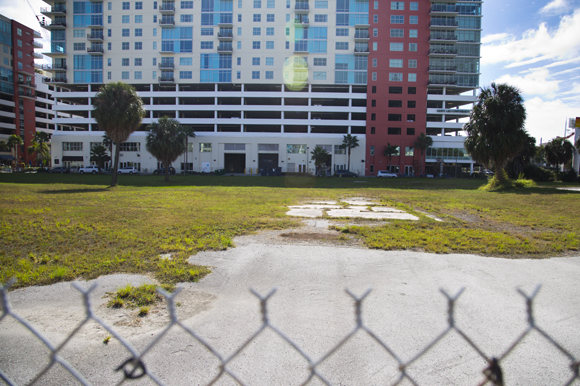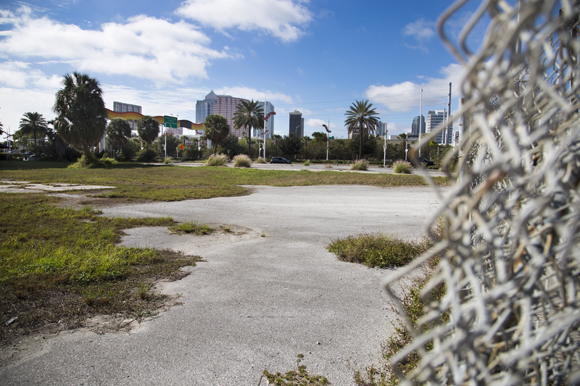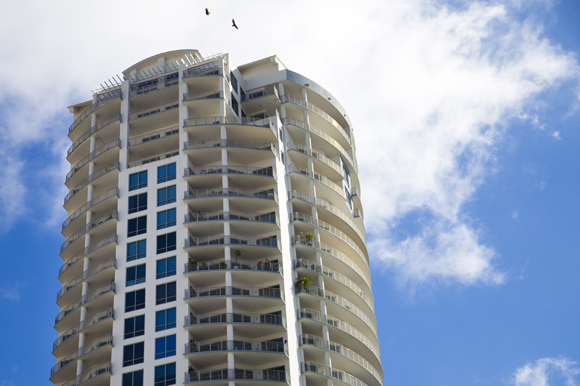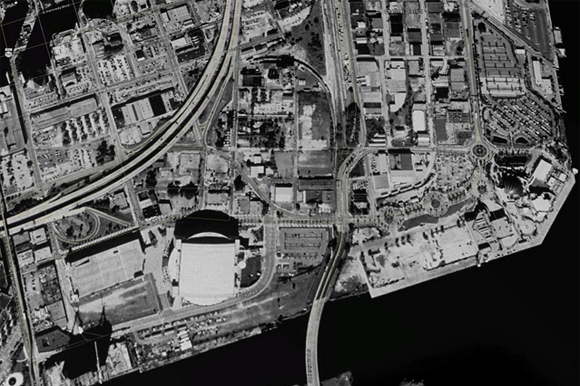Channel District in downtown Tampa: ‘Hottest real estate market in region’
More than 5,000 people will call the waterfront Channel District home when development projects currently underway in downtown Tampa are completed by the end of the decade. More projects are planned. And more are expected as investments continue.
From the outside – meaning if you don’t live there – what you notice about Tampa’s Channel District is lots of tall, new buildings with art-deco architecture and ground-floor storefronts, more traffic, a big new gym and a park.
But for those on the inside, what’s happening there, or what they hope will happen, is the creation of a neighborhood.
There are going to be more big buildings and more people, as a seemingly endless parade of new, large-scale residential projects are started or planned.
The area has reached a “tipping point,” at which the number of residents is great enough to attract more businesses, and the conveniently located businesses attract more residents, says Robert McDonaugh, administrator in the city’s Economic and Urban Development Department.
About 3,300 people now live in the Channel District, and that number will grow to about 5,000 when projects currently under construction or seeking residents are completed and full – with more projects to come.
“I’m biased, but I would say it’s the hottest real estate market in the whole region right now,” competing mainly with downtown St. Petersburg and downtown Sarasota, says Ken Stoltenberg of Mercury Advisors, one of the most active real estate development firms in the area.
“If you look at the total investment planned for the next 10-15 years down there, including those by Jeff Vinik and the port, it’s over $3 billion.”
Big visions, big opportunities
Vinik and his Strategic Property Partners plan a massive redevelopment of about 40 acres in downtown near Amalie Arena, where the Tampa Bay Lightning play, including the Channelside shopping center, a relocated campus of the University of South Florida medical school, a luxury hotel, shops and office buildings.
Port Tampa Bay has announced a long-term vision plan for redeveloping the waterfront, including two 75-story residential towers – an idea whose practicality some question, at least in the short term – plus hotels, a marina and a waterfront park comparable to Curtis Hixon Park on the other side of downtown.
“The entire district is pretty much moving at light speed,” says Vance Arnett of the Channel District Community Alliance.
With about 20,000 people living in a two-mile radius, it’s big enough at last to attract a grocery store – and in what may be the most important development there in some time for the residents, that’s happening. Mercury Advisors has obtained building permits for a new Publix at the corner of East Twiggs Street and North Meridian Avenue.
To Arnett, the importance of that can hardly be overestimated for the kind of people who live in the Channel District, who value an urban, car-free lifestyle.
That’s not just young people — it’s also retirees like Arnett and his wife, who view the area as “our kind of assisted living,” he says.
The reshaping of the Channel District, originally a warehouse district serving Port Tampa Bay, has been surprisingly rapid.
Stoltenberg says he initially was attracted to the area in the early 2000s because, “there was nothing there — vacant lots, Quonset huts and some warehouses,” making it easy to assemble property for projects.
But it had begun to attract artists, and Victory Lofts and Model T Lofts began making the district a haven for them and for “urban pioneers” early in the last decade.
Those developments were followed by Lofts on 12th; The Towers of Channelside; The Slade; Grand Central at Kennedy, a Mercury Advisors project; Pierhouse; Ventana; The Meridian; The Place; and Bell Channelside.
Today, just keeping track of the welter of developments that are planned, under construction or recently completed is tough. They include:
Skyhouse, a 23-story, 320-unit luxury apartment building at the corner of 11th and Whiting Streets, opened in mid-2015 and is currently seeking tenants.
An unnamed, eight-story project under construction by the residential arm of the Florida Crystals sugar company on the south side of Kennedy Boulevard between 11th and 12th streets, to have 300 units plus a parking garage and ground-floor retail.
Mercury’s Channel Club – formerly known as The Martin – a 21-story project in the works for nearly a decade, adjacent to the Publix, expected to break ground in February.
Vel Pillar, another Mercury project at Channelside and Whiting.
Arnett says there are several other sites where he believes construction activity is likely to begin soon, including a lot on Meridian just north of East Cumberland, where old buildings have just been torn down; and others where locals have noticed what looks like construction-related activity.
Making livability a priority
The pace of construction is rapid enough to have caused friction between existing residents on one side and developers and the city on the other, he says.
“Sometimes in its zeal to get things done, get a tax base built, the city hasn’t put enough emphasis on the livability of the neighborhood,” he says.
“They’re so focused on build, build, build. I love the development down here, but you don’t have to sacrifice the quality of life for that.”
Arnett says construction projects often close the area’s sidewalks for months or years at a time, undercutting what urban residents most value, a walkable neighborhood.
Faced with horrendous rush-hour traffic problems, the city and state governments put more emphasis on moving traffic than on pedestrian safety, Arnett charges, sometimes failing to build proper crosswalks or design intersections for pedestrians.
The new park on Washington Street, he says, doesn’t get the maintenance it needs — the large “shade wings” are covered with algae and have holes in them, unlike the similar, scrupulously maintained wings on the Riverwalk.
Stoltenberg doesn’t dispute Arnett’s complaints, but says the inconvenience will be temporary.
“You’re always going to have a tension between those two things,” he says. “When you have to balance new construction with livability, that’s a good problem to have. The bad problem would be no construction at all. I’m sure the city will improve their policies to address those concerns.”
McDonaugh says the growing pains won’t be permanent, and that the Channel District is “becoming a more compete neighborhood.”
A small grocery store called Duckweed Urban Market, which now has a location on Tampa Street, plans to open a branch in The Place at 912 Channelside, which will partially fill the grocery gap for two years or more until the Publix opens, he says.
Powerhouse Gym draws hundreds of people, not just those who live nearby.
One issue, McDonaugh says, is Channelside Drive itself. It should be a visual treat, and it isn’t.
He questions whether it could ever be a showplace like Bayshore Boulevard, but says it needs at minimum landscaping on both sides and the median, comparable to Ashley Drive.
The city doesn’t currently have such plans, but the Port plans do include renovation of Channelside Drive.
McDonaugh says realization of what he called the Port’s “vision plan” is well into the future — “There has to be an awful lot of infrastructure for that to be completed.”
Residential towers 75 stories tall, he says, would dwarf any other structures in Tampa, where the tallest downtown building is 42 stories and the tallest residential building is 25. He says he considers the plan more an attention-getter than a near-term work plan.
Meanwhile, probably in the shorter term, Vinik’s plans will attract more and more workers to the area, many of them able to afford the sky-high rents the new apartments in the city are commanding, $2 or more per square foot per month.
“That’s a whole new wave of people working in that area who are going to want to live there,” he says. “The demand for housing is going to be robust over the next few years.”



















